I'm creating an embedded system based on i.MX287 processor from NXP(Freescale). I'm using a core processing board which is connected to my evaluation board via a mini PCIe connector.
UARTs 0,3,4 are used as RS232 and UARTs 1,2 as RS485. The core board does not provide the RTS signals in its pinout, so I have to use pins from an I2C GPIO expander to control the RS485 direction. The GPIO expander module is also used for controlling some other devices on the board.
In user-space, I can control the direction pin using libi2c, but my client asked me to put the direction pin control in the UART driver.
Questions:
1- how can I interact with an i2c device inside the auart driver? (is it possible)
2- if it is possible, then how to prevent the i2c-0 bus from being blocked by the kernel? (I also need the userspace calls to the libi2c to work properly)
I googled a lot, but most cases are about how to use the I2C driver or how to activate GPIO pins in the sysfs, and I was able to do all of those.
The libi2c is for userspace so I cannot call it here. I also know that opening a file(/dev/i2c-0) in kernel and reading or writing to it is not a good idea. I am trying to understand what is the best way to handle this problem, without causing any concurrent access issues.
I would appreciate any ideas
P.S. - I don't have a deep understanding of how Linux kernel works, so sorry if my question is a little vague.
Edit 1:
based on @0andriy 's suggestion, I edited the DTS file and added the following to /arch/arm/boot/dts/my_dts_file.dts:
/dts-v1/;
#include "imx28.dtsi"
/ {
// some definitions
apbx@80040000 {
i2c0: i2c@80058000 {
pca8575: gpio@20 {
compatible = "nxp,pca8575";
reg = <0x20>; // PCA8575PW Address -0-0-0
gpio-controller;
#gpio-cells = <2>;
};
};
auart1: serial@8006c000 {
pinctrl-names = "default";
pinctrl-0 = <&auart1_2pins_a>;
linux,rs485-enabled-at-boot-time;
rs485-rts-delay = <0 0>; // in milliseconds
rts-gpios = <&pca8575 4 GPIO_ACTIVE_LOW>;
rs485-rts-active-low;
status = "okay";
};
auart2: serial@8006e000 {
pinctrl-names = "default";
pinctrl-0 = <&auart2_2pins_b>;
linux,rs485-enabled-at-boot-time;
rs485-rts-delay = <0 0>; // in milliseconds
rts-gpios = <&pca8575 5 GPIO_ACTIVE_LOW>;
rs485-rts-active-low;
status = "okay";
};
};
// some definitions
};
and then rebuilt the kernel. I also edited the mxs_auart_init_gpios function in the mxs-auart.c driver to print out the pin description of all the auart GPIOs at boot time. but gpiod = mctrl_gpio_to_gpiod(s->gpios, i) is always NULL.
the pca8575 GPIO controller is not added under /sys/class/gpio/
root# ls /sys/class/gpio
export gpiochip128 gpiochip64 unexport
gpiochip0 gpiochip32 gpiochip96
Edit 2:
auart1_2pins_a and auart2_2pins_b from the imx28.dtsi file :
auart2_2pins_b: auart2-2pins@1 {
reg = <1>;
fsl,pinmux-ids = <
MX28_PAD_AUART2_RX__AUART2_RX
MX28_PAD_AUART2_TX__AUART2_TX
>;
fsl,drive-strength = <MXS_DRIVE_4mA>;
fsl,voltage = <MXS_VOLTAGE_HIGH>;
fsl,pull-up = <MXS_PULL_DISABLE>;
};
auart1_2pins_a: auart1-2pins@0 {
reg = <0>;
fsl,pinmux-ids = <
MX28_PAD_AUART1_RX__AUART1_RX
MX28_PAD_AUART1_TX__AUART1_TX
>;
fsl,drive-strength = <MXS_DRIVE_4mA>;
fsl,voltage = <MXS_VOLTAGE_HIGH>;
fsl,pull-up = <MXS_PULL_DISABLE>;
};
I'm using kernel 4.14.13
